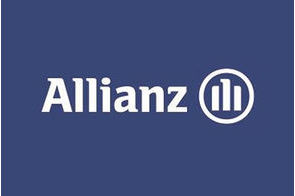Latest News
African demographics changing rapidly, forcing a re-think of pensions

News Highlight
African pension funds currently have approximately US$350 billion of assets under management.
Africa has long been known for its youthful population, and while the continent will continue to have the largest youth cohort in the world, they’ll live longer than their forebearers. This is according to the latest Bright Africa pensions research from RisCura, a global investment firm.
In fact, longevity expectations have changed dramatically, thanks to better nutrition, medical advances and overall improvements in the general standard of living.
“The estimates for the elderly are astounding, which is putting enormous pressure on governments and pension funds to deliver some form of social security,” says Gerald Gondo, Business Development Executive (Africa) at RisCura.
Estimated at 13.1 million people aged 65 or more in 1975, this figure increased to 41.3 million people in 2015 and is expected to reach 150.6 million people in 2050 and 652.4 million people in 2100.
“Africa will continue to have the largest youth cohort on the planet – but they’ll live longer than their forebearers, and will need retirement income,” Gondo says. “It is critical for savings to take place for this cohort and more importantly, for that savings to sustainably grow in tandem with this inevitable demographic transition.”
A major issue governments face is that 85.5% of Africa’s working population are informally employed. This is according to the International Labour Organisation (ILO). Not only are informal workers difficult to target they also contribute minimally, if at all, to overall tax collection. “Clearly, this presents limitations to traditional long-term savings products, like pensions,” Gondo says.
To avert fiscal and social stress, policymaking on pensions and social security in Africa needs to quickly move to enable affordable, convenient, and secure micro-pension products to be established.
Nigeria, where only 10.5% of the workforce is formally employed, has already done so. The country’s National Pension Commission (PenComm) launched a micro pension scheme in 2019 for the informal sector and employees of organisations with less than three employees.
Gondo says that technology (fintech) is proving to be a key enabler of financial inclusion and pension provision in Africa. Countries like Rwanda are demonstrating that it is possible to bring national identification systems and high mobilephone penetration together to foster financial inclusion and a broad-based adoption of savings products.
As of 30 June 2020, the Rwanda Utilities Regulatory Authority (RURA) recorded 9.8 million active mobile subscriptions (75% of the population). “Mobile technology provides an important platform for the delivery of a broad range of financial services, including micro-savings products,” says Gondo.
African pension funds currently have approximately US$ 350bn of assets under management. Gondo says that although slow, a progressive rebalancing of this capital away from domestic fixed income to equities and alternative investments is underway. “They are attuning their asset allocation to the changing social and economic environment.”
In most OECD and many non-OECD countries, bonds and equities remain the two predominant asset classes for pension funds. For the selected pension funds within the 2020 Bright Africa Pensions research, South African, Botswana, and Namibian asset allocations reflect greater allocations to equities than OECD countries. For the rest of the African countries, however, the picture continues to illustrate a skew to fixed income.
Regulation continues to be the single most important determinant of asset allocation decisions in African countries. However, there are cases where regulation has changed, but the market has not followed. In Kenya, for example the upper limit for exposure to private equity of 10%, was established in 2016. As of June 2020, the total allocation to private equity according to the published statistics from the Retirement Benefits Authority (RBA), was less than 1%.
The prospect of a seismic growth in the elderly population on the continent and the fact that over 85% of working Africans are employed informally pose unique challenges to the African pension fund industry. However, progress is being made in tackling these issues. Regulators are reviewing legislation, governments are experimenting with unique solutions such as micro-pensions, asset allocations are changing to allow for greater long-term growth and across the continent, the high rate of mobile penetration is being viewed as a significant opportunity to innovate.
“The road ahead will be thorny, and no doubt full of delays, but awareness of the problems is there, coupled with firm intentions to solve them,” Gondo concludes.
RisCura is a purpose-driven global investment.
Related News
Latest Blogs
- Driving economic growth through green transition in Nigeria
- CBN is fighting inflation instead of stagflation
- Why electricity privatization failed (2)
- How net metering can boost embedded power generation
- Adaora Umeoji and gender in Nigerian banking leadership
Most Popular News
- IFC, partners back Indorama in Nigeria with $1.25 billion for fertiliser export
- Ali Pate to deliver keynote speech at NDFF 2024 Conference
- Univercells signs MoU with FG on biopharmaceutical development in Nigeria
- CBN increases capital requirements of banks, gives 24 months for compliance
- CBN settles backlog of foreign exchange obligations
- Euromonitor forecasts Sub-Saharan Africa GDP to grow to $4.5trn by 2040






